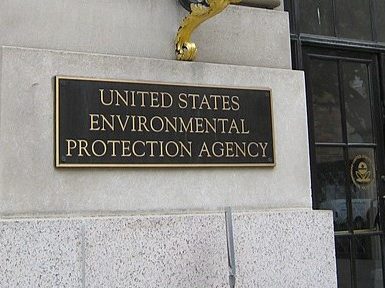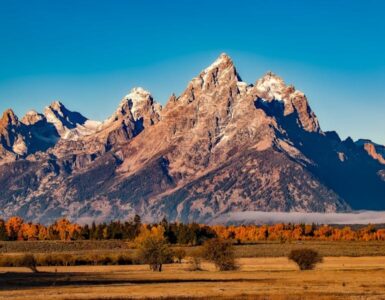A new report from the Arizona Manufacturers Council (AMC) says that Arizona’s arid climate, geography, and other circumstances beyond the state’s control make meeting federal ground-level ozone requirements difficult, but that the state can take steps to meet air quality standards without harming the economy.
The report, “Haboobs, Neighbors aAAR-FORIA-2019-WEBnd Other Factors Beyond Arizona’s Control: How Federal Ozone Regulations Impact Arizona,” suggests that the state could develop a system for industry to bank and exchange emission reduction credits, develop non-traditional ways of offsetting emissions like paving dirt roads, and seek to argue before federal regulators that the state’s proximity to California and Mexico make compliance in places like Yuma County a near impossibility.
The report was produced in conjunction with the Prosper Foundation and the law firm Snell & Wilmer. Former state lawmaker Amanda Reeve, a policy adviser to Snell & Wilmer’s environmental and natural resources practice, authored the report.
The paper outlines the unique challenges faced by Arizona as regulators, policymakers and industry leaders consider how to meet federal air quality guidelines under the Clean Air Act (CAA) and avoid a designation of “nonattainment,” which can come with harsh penalties, like a loss of federal funding for roads and more expensive and more cumbersome permitting requirements.
“Ideally, Congress would get to work on a modernization of the federal Clean Air Act that reflects the realities and unique challenges to compliance for states in the Intermountain West like Arizona,” AMC Executive Director Allison Gilbreath said. “But since congressional action is highly unlikely, it’s up to leaders in Arizona to devise policies that will result in compliance, while solidifying the state’s continued economic growth.”
Increasingly strict standards for controlling ground-level ozone are a major concern for Arizona, where primary contributors to ozone pollution do not fall under the regulatory authority of the state and/or local pollution control agencies.
“The Clean Air Act has been largely successful in delivering cleaner air and a healthier environment, but it’s not without its shortfalls,” Reeve said. “There are ozone-causing pollutants that originate outside Arizona’s borders that state regulators can’t control, putting the onus on us to search for creative, sustainable solutions that the U.S. Environmental Protection Agency will approve in order for us to achieve and maintain attainment of the national standards.”
The paper cites the challenges posed to Yuma County in southwestern Arizona, which is wedged between high-polluting California to the west and Mexico to the south.
“Yuma County is the most notable example provided when discussing the urgency in the calls to modernize the CAA. The USEPA acknowledges that the predominant sources of ozone pollutants are Mexico and California,” the report states.
The paper goes on to say, however, that determining the pollutants’ source is exceedingly difficult. “It will be a challenging and costly effort for Arizona to quantify the ozone pollutants originating in Mexico versus California should it attempt to obtain an International Transport designation,” and “While many provisions of the CAA are in need of being modernized, the immediate concern for Arizona is providing some sort of relief to Yuma as expeditiously as possible.”
The AMC’s Gilbreath says she hopes the paper proves useful to stakeholders in the Arizona air quality conversation.
“Our hope is that this survey of the last several years of Arizona’s efforts to comply with strict air quality standards will be a helpful source to elected officials, regulators, and industry leaders as we think about what the state’s air quality strategy should look like,” she said. “If Arizona’s ability to expand its economy is thwarted by an inability to remain in compliance, then continued job growth and prosperity are at risk. Arizona’s manufacturers remain confident that we can find solutions that ensure clean air and a strong economy.”
The report was released at the AMC’s Environmental and Sustainability Summit, taking place July 24-26 at the High Country Conference Center in Flagstaff. A conference agenda can be found here.
A summary of the report follows:
What’s at stake?
Due to Arizona’s arid climate, geography and other circumstances beyond the state’s control, parts of the state are unable to meet certain federal air quality standards including ground-level ozone requirements. Running afoul of the EPA’s ozone caps, known as being in “nonattainment,” can come with harsh penalties, like losing federal funding for roads, requiring emission offsets from new or modified major sources, and implementing more cumbersome permitting requirements.
Imposing additional regulations and hefty new permitting fees on industrial users would be a major setback for Arizona manufacturers and the 170,000 men and women employed by the industry in the state. More importantly, however, these actions will have minimal effectiveness in protecting the health and welfare of Arizona residents; because they do nothing to address the real issues at the heart of the state’s challenges with ozone.
Why is Arizona unique?
Ground-level ozone is a harmful pollutant that forms above the earth’s surface when certain pollutants react with intense sunlight. Air quality is primarily driven by weather and geographic factors.
- Valley areas surrounded by mountains – particularly those with high temperatures as is the case in Arizona – are more likely to retain pollutants than other regions.
- Mobile sources including cars, trucks and machinery also present a unique challenge for Arizona due to the unusually long life spans of vehicles operating in the state. While Arizona’s dry conditions allow drivers to keep vehicles longer, older vehicles often have outdated technology and less effective emissions controls compared to newer models.
- Exacerbating these issues is the lack of emissions reductions credits, also known as emissions offsets, available for manufacturers operating in Maricopa County (Phoenix), Pima County (Tucson) and other parts of the state.
What can we do?
Modernizing and updating the Clean Air Act is the best solution. Recognizing that federal action is considered unlikely in the near-term, the following minimal steps should be taken promptly:
- Mitigate the negative impact on Arizona manufacturers by increase the number of emissions reductions credits available.
- The state can submit a 179B demonstration showing that these areas would be in attainment “but for” international emissions. Collecting the necessary modeling and monitoring data will require coordination and cooperation between state agencies, county officials, Native American leaders and stakeholder groups.
Lastly, state and local agencies should endeavor to find non-traditional offsets to increase the number of emissions reductions credits available. Examples of non-traditional offsets include paving dirt roads and converting combustible engine-powered vehicles and machinery to electric.
















Add comment